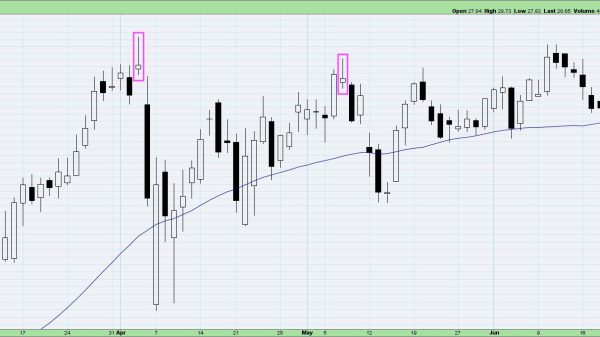JPY Drops Amid $2.96 Billion Trade Deficit and Weak Data
Quick Look:
Trade Deficit Impact: Japan’s trade deficit of Y462.5 billion in April, exacerbated by a weak Yen, pressured the currency further. Economic Indicators: Despite an 8.3% rise in exports, falling short of the expected 11%, mixed signals from machine orders and the Tankan survey highlight ongoing economic challenges. Monetary Policy Divergence: Japan’s low yields, due to gradual rate hikes, contrast sharply with the US, supporting the USD/JPY uptrend.The Japanese Yen experienced a notable decline against the United States Dollar on Wednesday, reflecting the market’s reaction to a slew of economic data releases from Japan. The latest figures revealed a significant trade deficit, exerting additional downward pressure on the currency. This article delves into the factors influencing Yen’s performance, the economic indicators at play, and the broader implications for USD/JPY trading.
Economic Data and Trade Deficit
April’s trade data underscored a larger-than-expected deficit of Y462.5 billion ($2.96 billion), with the weaker Yen inflating the cost of imports. Although exports showed an 8.3% year-on-year increase, surpassing March’s figures, they fell short of the anticipated 11% rise. This shortfall in export growth contributed to the widening trade gap, signalling underlying challenges in Japan’s trade dynamics.
Moreover, machine orders—a critical economic bellwether—registered growth. However, forecasts cast doubt on the sustainability of this trend. The closely monitored Tankan business survey painted a mixed picture. It showed stability in the manufacturing sector’s sentiment but growing optimism in the service sector.
These mixed signals from economic indicators did little to significantly alter the USD/JPY trade trajectory. The currency experienced a slight dip during the Asian trading session, but the overall impact was minimal.
Monetary Policy and Yen Yields
Japan’s tentative steps away from its longstanding ultra-loose monetary policy have not markedly altered the landscape of Yen yields, which remain notably low compared to other major currencies. The Bank of Japan’s commitment to a gradual increase in interest rates ensures that the Dollar maintains its monetary edge over the Yen for the foreseeable future. This divergence in monetary policy continues to underpin the USD/JPY uptrend.
Despite the persistent Yen weakness, Tokyo’s authorities have expressed readiness to intervene if the currency’s decline becomes disorderly. However, the significant monetary policy gap between Japan and the United States complicates any intervention efforts. Consequently, the entrenched uptrend of the USD/JPY pair remains intact, with the market maintaining a cautious approach to potential upper resistance levels.
US Interest Rates and Market Sentiment
The market’s expectations regarding US interest rates play a pivotal role in the USD/JPY dynamics. There is a consensus that the Federal Reserve’s next move will likely be a rate cut. However, the anticipated frequency and timing of such cuts have been scaled back compared to earlier in the year. A potential rate cut in September remains on the table, contingent on forthcoming economic data.
This cautious outlook is reflected in the USD/JPY trading patterns. Since mid-March, the pair has adhered to a narrower uptrend channel within the broader range established since January’s rebound. Support is at 154.479, and resistance is at 158.178. This channel has generally held firm, except for a brief surge in early May, which prompted intervention from Tokyo.
The market remains wary of pushing the USD/JPY pair towards its upper resistance. There is a mindful awareness of the intervention risk that looms at those levels. Consequently, while the Yen’s weakness persists, market participants will likely approach significant movements cautiously. They balance the interplay of economic data, monetary policy, and intervention risks.
The Japanese Yen’s ongoing struggle against the US Dollar reflects a complex interplay of economic data, monetary policy divergence, and market sentiment. April’s trade deficit, mixed economic indicators, and the Bank of Japan’s cautious approach to rate hikes all contribute to the currency’s weakness. Meanwhile, the broader market sentiment regarding US interest rates and the potential for intervention add further layers of complexity to the USD/JPY trading landscape. As these factors continue to evolve, market participants will closely watch the Yen’s trajectory. The ever-present risk of intervention tempers their cautious optimism.
The post JPY Drops Amid $2.96 Billion Trade Deficit and Weak Data appeared first on FinanceBrokerage.
























